Aegis Missile Defense Site In Poland To Finally Go Operational (Updated)
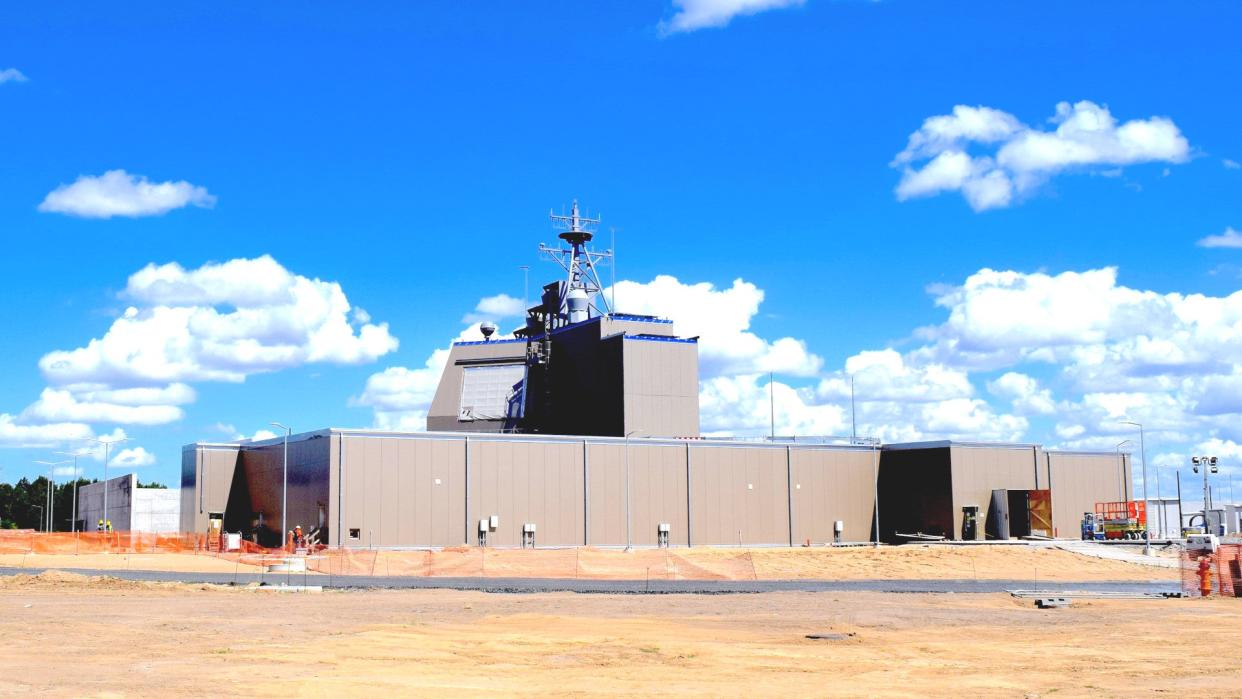
The U.S. military's Aegis Ashore ballistic missile defense site in Poland is finally set to go operational after years of construction delays and other issues. The facility is ostensibly meant to help guard Europe against ballistic missile strikes from 'rogue actors' like Iran, but the security landscape in Poland and the rest of Europe has dramatically changed since the project started in 2009.
Navy Rear Adm. Douglas Williams, the acting director of the Missile Defense Agency (MDA), laid out new details about the schedule for Aegis Ashore Poland in written testimony submitted ahead of a hearing before members of the House Armed Services Committee today.
"The Navy will formally accept Aegis Ashore Poland into their inventory on December 15,
2023," Williams wrote. "The Navy will install additional upgrades at Aegis Ashore Poland through May 2024, after which it will transfer to NATO in July 2024 for command and control of Aegis Ashore Poland in the defense of NATO European states against ballistic missile threats originating outside the Euro-Atlantic area."

"Aegis Ashore Poland, located in Redzikowo, was added to the Operational Capability Baseline in September 2023 with upgrades over the original design and state-of-the-art Integrated Electronic Security System," the acting head of MDA added. "Aegis Ashore Poland was delivered to the U.S. Navy on October 1, 2023 for operational use and maintenance."
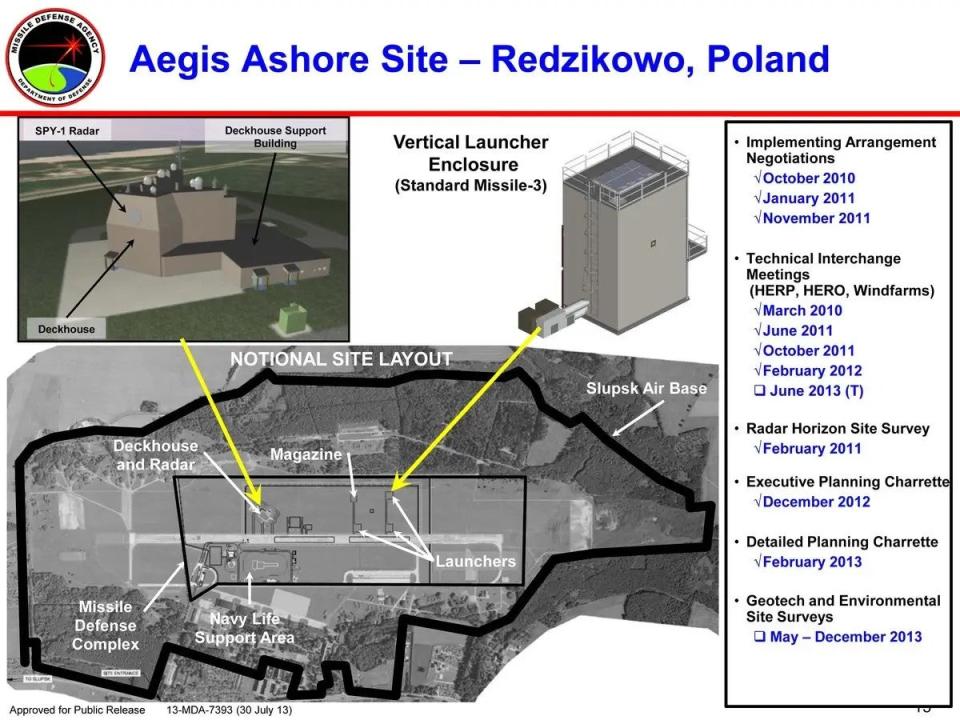
The installation is the second such site the U.S. military has established in Europe. Aegis Ashore Romania has been operational since 2016.
The Aegis Ashore sites in Poland and Romania, as well as a dedicated test version of the system in Hawaii, all have the same core configuration. These sites are composed of elements taken from the Flight IIA Arleigh Burke class destroyer design that have been ported over into a land-based arrangement. This includes a "deckhouse" building modeled on the Arleigh Burke's main superstructure that contains the critical Aegis Combat System and AN/SPY-1 radar, as well as other supporting systems and workspaces. There is also a separate above-ground structure containing a Mk 41 Vertical Launch System (VLS) array, also found on Arleigh Burkes, as well as a host of other U.S. and foreign warships.
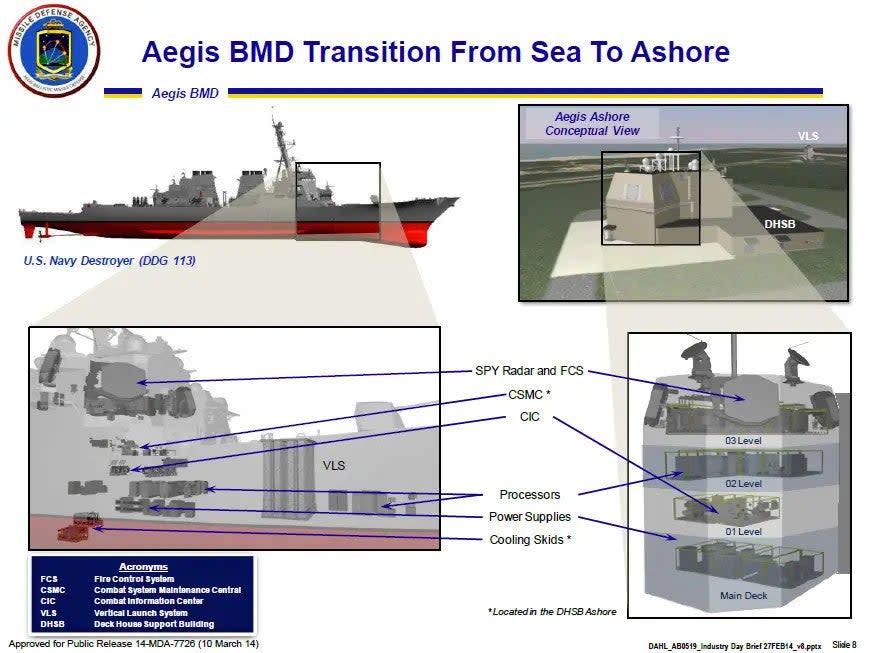
You can learn more about the Aegis Combat System, specifically, and the capabilities it offers in this past in-depth War Zone feature.
https://www.youtube.com/watch?v=dMUfDCrxR2U
Variants of the Standard Missile 3 (SM-3) surface-to-air missile are the primary interceptors used with the Aegis Ashore systems in Poland and Romania, which are designed to engage ballistic missiles (including intercontinental ballistic missiles, or ICBMs) outside of the Earth's atmosphere during the mid-course portion of their flights using a kinetic "kill vehicle." The kill vehicle destroys its target by ramming into, rather than with a traditional explosive warhead.
The latest version of the SM-3 family is the Block IIA version, which was developed in cooperation with Japan and is significantly larger and more capable than earlier types.
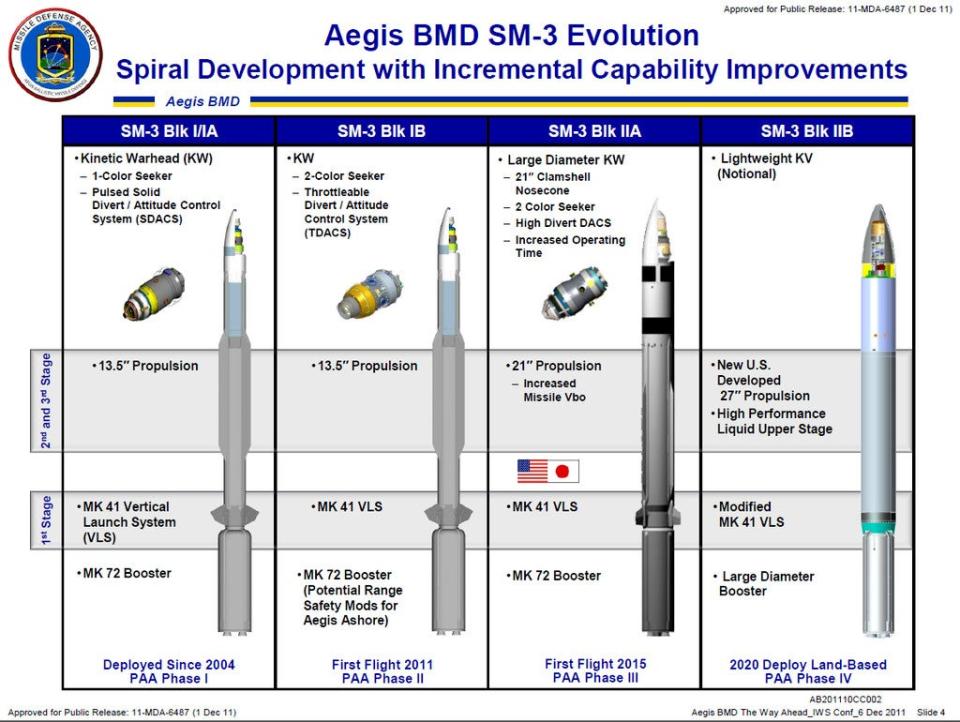
https://www.youtube.com/watch?v=P7j4UONqcro
There has been talk in the past about the integration of additional interceptors into the Aegis Ashore system, especially in light of growing concerns about new hypersonic weapons. The Mk 41 VLS is a modular launcher that can already accommodate a host of other weapons, including the SM-6. The SM-6 is a multi-purpose design and versions have been developed that are more optimized for use against hypersonic threats.
"Today, the SM-6, which uses a blast fragmentation kill mechanism, is the only interceptor available for a limited defense against hypersonic missile threats," acting MDA boss Williams noted in his written testimony for the hearing today. This is something the U.S. military has disclosed in the past.
The now-in-development Glide Phase Interceptor (GPI) could be another future interceptor option for Aegis Ashore.
https://www.youtube.com/watch?v=-q-ieXZgrhY
There has been talk in the past about the potential for Aegis Ashore sites to fire missiles beyond surface-to-air interceptors, especially Tomahawk land-attack cruise missiles. The U.S. government has long denied any intention of integrating weapons like Tomahawk into Aegis Ashore and had also been barred from doing so under the Intermediate-Range Nuclear Forces Treaty, or INF. That treaty, originally signed between the United and the Soviet Union, remained in force between the United States and Russia until 2018. The collapse of that deal increases the potential for long-range cruise missile threats in Europe.
Aegis Ashore Poland becoming operational will be a major milestone for the project, which has become something of a saga over the past 14 years. The site's origins date back even further, to the early 2000s, when the plan was to establish a Ground-based Midcourse Defense (GMD) system in Poland linked with a radar site in the Czech Republic (now formally known as Czechia). GMD is a much more complex system that utilizes larger silo-launched interceptors and has been beset by technical and other difficulties over the years, as you can read more about here.
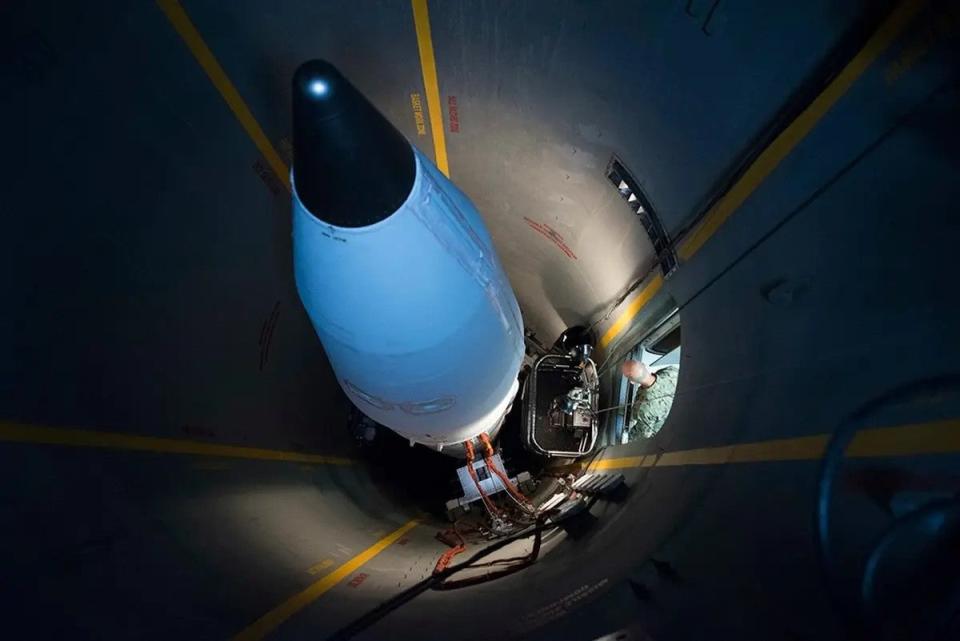
In 2009, President Barack Obama's administration scrapped the GMD plans, including the proposed radar facility in Czechia, and moved ahead instead with the establishment of the second Aegis Ashore site in Poland. The hope had originally been that Aegis Ashore Poland would be delivered in 2018 and go operational relatively shortly afterward.
As of 2019, this had already been pushed back some 18 months, a delay that was blamed on construction-related issues. Further construction difficulties, including worse-than-expected seasonal weather, compounded by the COVID-19 pandemic, all subsequently led to the schedule slipping to 2022 and then to 2023. Rear Adm. Williams has now, as noted earlier, confirmed that the formal delivery of the system to the Navy did finally take place in October.
On top of all this, Aegis Ashore Poland will come online in a very different geopolitical and security environment in Poland and the rest of Europe than existed in 2009. As acting MDA director Williams noted in his written testimony today, the site's ostensible purpose is still to support "the defense of NATO European states against ballistic missile threats originating outside the Euro-Atlantic area."
However, today, Poland has become a focal point for Western military aid to neighboring Ukraine and has been an equally central topic of discussion in the context of concerns about that conflict spilling over. The Russian government has made vague threats in the past indicating that it could target aid bound for Ukraine in third-party countries. Last year, two Polish nationals were killed by an errant surface-to-air missile that had been fired in response to a Russian missile barrage targeting areas of western Ukraine.
https://twitter.com/YanniKouts/status/1592839794870341632
Poland faces additional security challenges with regard to Russian ally Belarus that predate the all-out invasion of Ukraine. Russia has further complicated the situation by deploying nuclear weapons, including nuclear-capable Iskander short-range ballistic missiles, on Belarusian territory in cooperation with that country's armed forces.
Back in 2010, it was already reported that the Polish government was most interested in hosting U.S. missile defense assets to counter potential threats from Russia and that U.S. officials had attempted to address this indirectly with assurances that the Aegis Ashore system could be potentially be employed against other "hypothetical" threats.
From the very beginning, Russian officials have lambasted the establishment of Aegis Ashore sites in Poland and Romania, as well as other U.S. and European missile defense developments, as threatening their national security interests. Aegis Ashore is, of course, not designed to defeat a large-scale ballistic missile barrage from a potential near-peer adversary like Russia, and it is not capable of doing so, even theoretically.
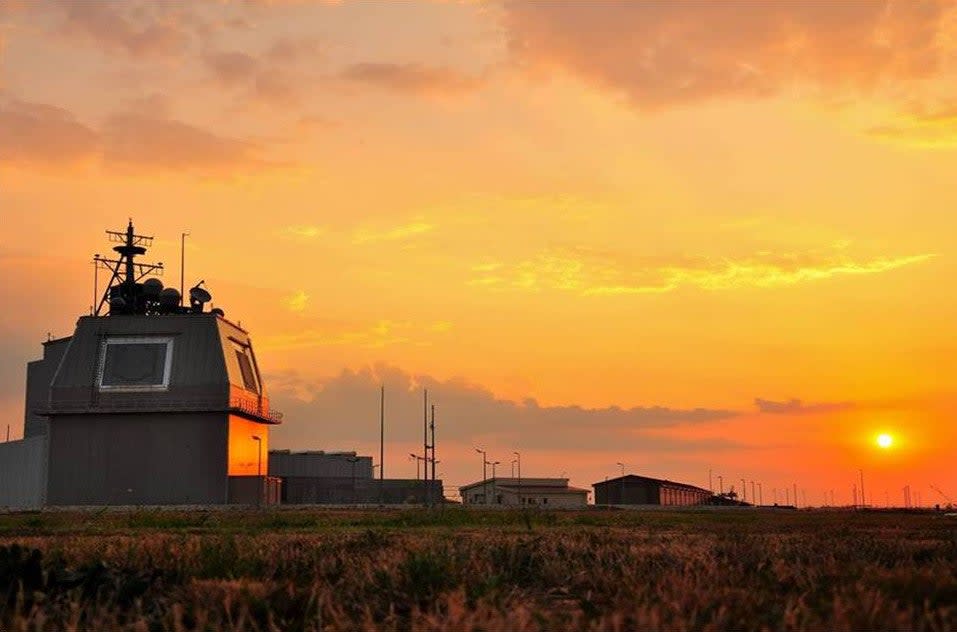
All this being said, the potential for smaller actors to launch equally smaller ballistic missile strikes on targets in Europe does remain a threat. Iran, in particular, continues to expand the scale and scope of its ballistic missile arsenal. It has also shown a willingness to use them, including to target U.S. forces in the Middle East.
Some Iranian proxy groups, particularly the Houthis in Yemen, are also significantly extending their capacity to launch ballistic missile strikes, as well as ones involving cruise missiles and drones, well away from their main operating areas. The Houthis have been launching ballistic missiles, as well as other long-range weapons, at Israel in recent weeks in response to that country's ongoing military operations in the Gaza Strip. This, in turn, has highlighted the value of Israel's ballistic missile defenses, which are also focused on defending against smaller-scale strikes and are now being employed routinely.
https://www.youtube.com/watch?v=Depz8_VHbxQ
The U.S. military itself is looking to expand its missile defenses, against ballistic and cruise missile threats, at home and abroad, including with an eye toward helping defend critical sites in the Pacific against potential Chinese strikes. The highly strategic U.S. Pacific island territory of Guam, in particular, is set to see a massive expansion of its air and missile defense capacity, which will include a new more distributed variation of the Aegis Ashore concept. You can read more about this here.
Concerns are already growing that the U.S. military's timeline for establishing its new defenses on Guam may be too ambitious. American officials want at least some portion of the new Enhanced Integrated Air and Missile Defense (EIAMD) system for the island to be operational by 2026.
Whatever role it may now take on in the broader geopolitical context that exists today, Aegis Ashore Poland, more than a decade in the making, is now finally set to become operational.
Update 12/14/2023:
The public affairs office for Naval Forces Europe (NAVEUR) and U.S. Sixth Fleet has reached out to The War Zone to reiterate that the formal acceptance of the Aegis Ashore Poland site, which is still scheduled to occur tomorrow, is part of a process that will lead to it becoming fully operational.
"The Aegis Ashore Missile Defense System (AAMDS) located in Redzikowo, Poland, will be accepted by the U.S. Navy on December 15, 2023, where AAMDS will enter a planned maintenance period to upgrade the network and computer systems," NAVEUR/Sixth Fleet's public affairs office said in a statement. "Once finalized, AAMDS Poland will be a fully integrated and tested element of the U.S. Ballistic Missile Defense System, and made ready to operate under NATO command and control. The official transfer to NATO is scheduled to occur spring to summer of 2024."
"The acceptance of the Aegis Ashore site in Poland, like its sister site in Romania, is an important step in our efforts to get AAMDS ready to protect against the growing threat posed by ballistic missiles launched from Iran," the statement continued. "The addition of this site in Poland will help provide enhanced coverage and expand protection for all NATO European populations, territories and forces against potential threats to the Euro-Atlantic area."
This is all in line with the information the Missile Defense Agency provided at the hearing on Capitol Hill last week.
Contact the author: joe@thedrive.com

